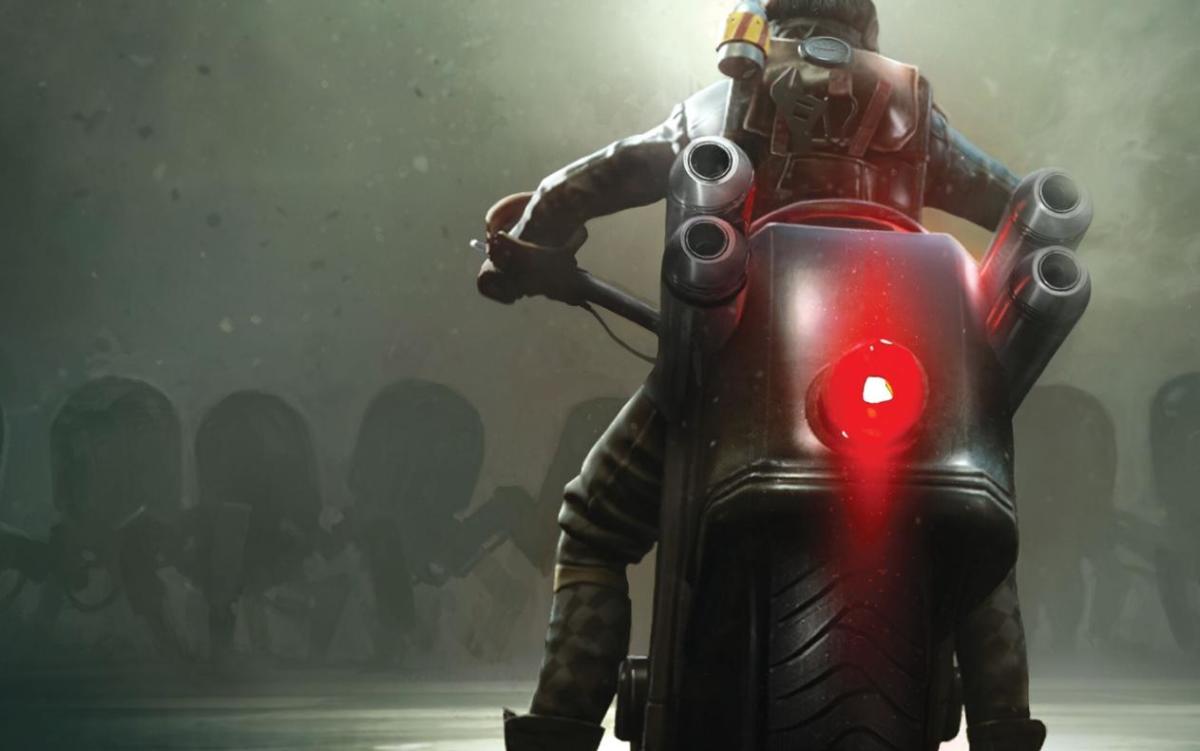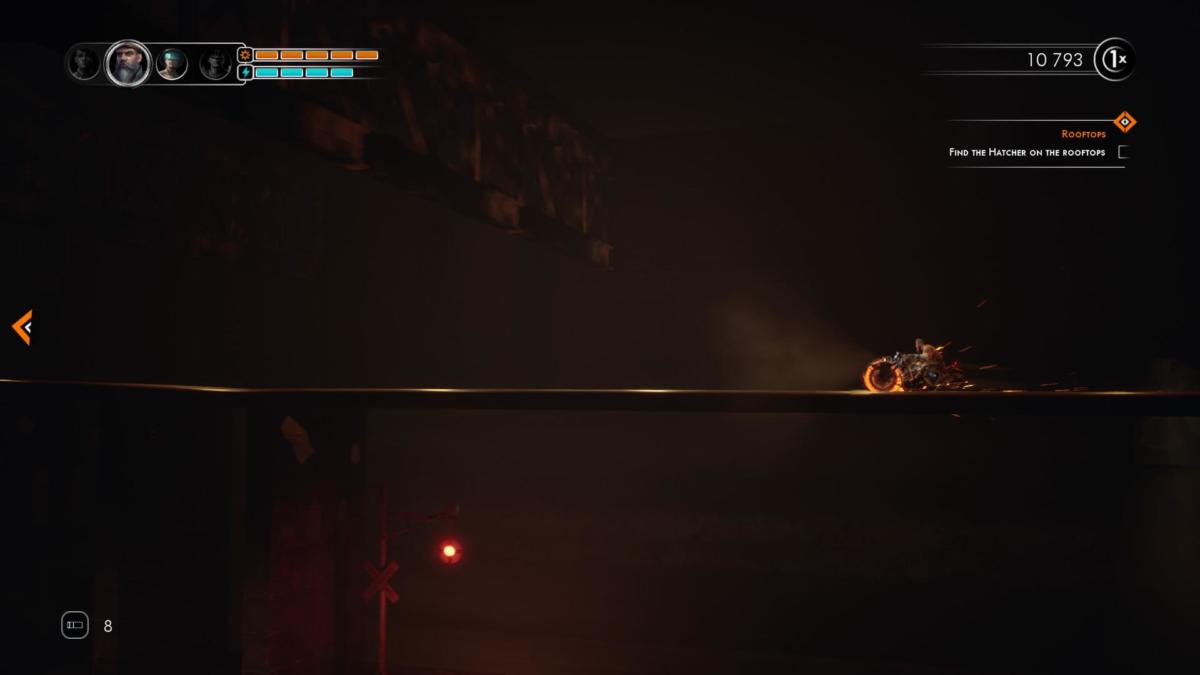Developer: Tate Multimedia
Publisher: Tate Multimedia
Platform(s): PC, PS4
Review code provided
I didn’t learn to properly ride a bike until I was nine. By all accounts, I was a late learner. I tried, and failed, many times, falling off again and again. Truthfully, the transition from riding with stabilisers to moving freely with them off was astounding to me, and the fact that real people could do this (some even without use of the handlebars) blew my mind. Wobbling and falling, like a jelly boy tumbling off a plate, was all I knew. I gave up for years until a sudden spurt of effort and enthusiasm took over in the months before I hit double-digits, where the guiding grace of some unknown entity allowed me the keep the handlebars and wheels in the same position long enough to pedal for more than five seconds gave me the same sense of achievement as when I somehow passed GCSE Maths with a C-grade.
It was this same strange level of satisfaction I felt when I finally cracked how to control the bikes in Steel Rats.
Set in a retro-futuristic, steampunk America, Steel Rats is a 2.5D action/platforming hybrid that takes a little bit of getting used to. While the concept is straight-forward enough — a detective is uncovering the story of the Steel Rats and a robot invasion revealed through playing the game — the controls are, to begin with at least, a little more troublesome. R2 accelerates and L2 reverses, flicking up and down enables you to ‘change lanes’, effectively move the rider between the top and bottom of the pathway and circle turns you around, while a combination of a direction and circle enacts a U-turn to help in zipping around corners.
On paper, this does sound relatively straightforward but will need a few levels before you’ll be comfortable enough to scoot around without the fear of bashing into an obstacle or flopping around like a fish trying out for a part in Sons of Anarchy because you hit the circle/spin button one too many times. From the outside looking in, I had expected to play a version of Trials HD, which is why the controls and how physics-driven the bikes were took me by surprise. However, once you have a grasp on this, the game really does open up for a more enjoyable ride.
The first level introduces you to Toshi, the tech-savy member of Steel Rats and subsequent levels ask you to locate and unlock the other Rats, respectively. Although each character does ultimately handle the same and share the same wheelsaw and dash moves that you use to plough through the more basic grunt enemies and obstacle fodder, they all hold unique special abilities that help each to stand out. Toshi, for example, uses item focused attacks, like a junkbot to zap enemies and minibombs, whereas James will use his motorcycle as a form of massive hammer.
You can swap between the Steel Rats, once unlocked, at any point in a level by clicking R3, although they act more as an extra-life more than a strategic option in any given stage. The levels themselves are split across five districts and each contain three optional objectives to complete, ranging from finishing the level in a set time to destroying a set amount of enemies or doing so many flips. Depending on how many objectives you fulfil, how many junkbots you trash and any combos you rack up, you’ll be rewarded with junk points (one man’s trash and all that).
Junk is the currency of Steel Rats and can purchase various upgrades and skins for each character. The skins are purely aesthetic and offer no in-game advantage, making them kind of redundant as, unfortunately, none of them particularly stood out and against the backdrop of the main game would get lost. The upgrades, despite not ever feeling absolutely vital to progression, are more likely to be of use and come in a few different flavours. Perks, for example, can provide an extra life or energy bar, whereas Primary, Charge and Ultimate upgrades all offer certain increases to that characters specific attacks, like improving damage, range and and mid-air offence – all of which can become more important as you get further into the game and the more and more enemy types are introduced.
With this said though, as the game went on, I did find myself less and less concerned with the objectives. This isn’t to say they were a hindrance, mind, but from just playing the game I ended up with more Junk points than I knew what to do with, so gaining new upgrades never felt of much importance, more something I remembered every few levels or so.
The game does offer plenty of exploration and replay value, aside from each level’s trio of objectives, as each new stage will have a secret Rat to locate (which unlocks concept art with in-game back-story to pair with it, which was a nice touch of world building) and different routes to take. I did appreciate Steel Rats’ non-linear approach to levels and it was fun to take advantage of the exploration opportunities and searching for hidden paths. The story isn’t affected either way you choose to play a level, but it’s nice to have that slight sense of freedom.
It has to be said though that, with all its controls to grasp and atmospheric levels, the storyline of Steel Rats is pretty weak. I’d be lying if I said I remembered the game even had a plot while playing through. It is disappointing as given the lovely level design (which does warrant praise), there’s clearly a big world here that is dying to be explored. The most you’ll get is six heavily narrated cutscenes between districts that just don’t offer enough to wet your appetite.
Steel Rats is a game that has many glimpses of potential and, at its core, is a fun and different side-scrolling, bike-bashing platformer that hosts a welcome amount of exploration opportunities. However, it’s greatly let down by a difficult control system, along with a weak story that takes itself far too seriously, cheesy characters and an upgrade system that lacks importance.
Some of the coverage you find on Cultured Vultures contains affiliate links, which provide us with small commissions based on purchases made from visiting our site. We cover gaming news, movie reviews, wrestling and much more.







